Migrating endangered monarch butterflies delight surprised park visitors
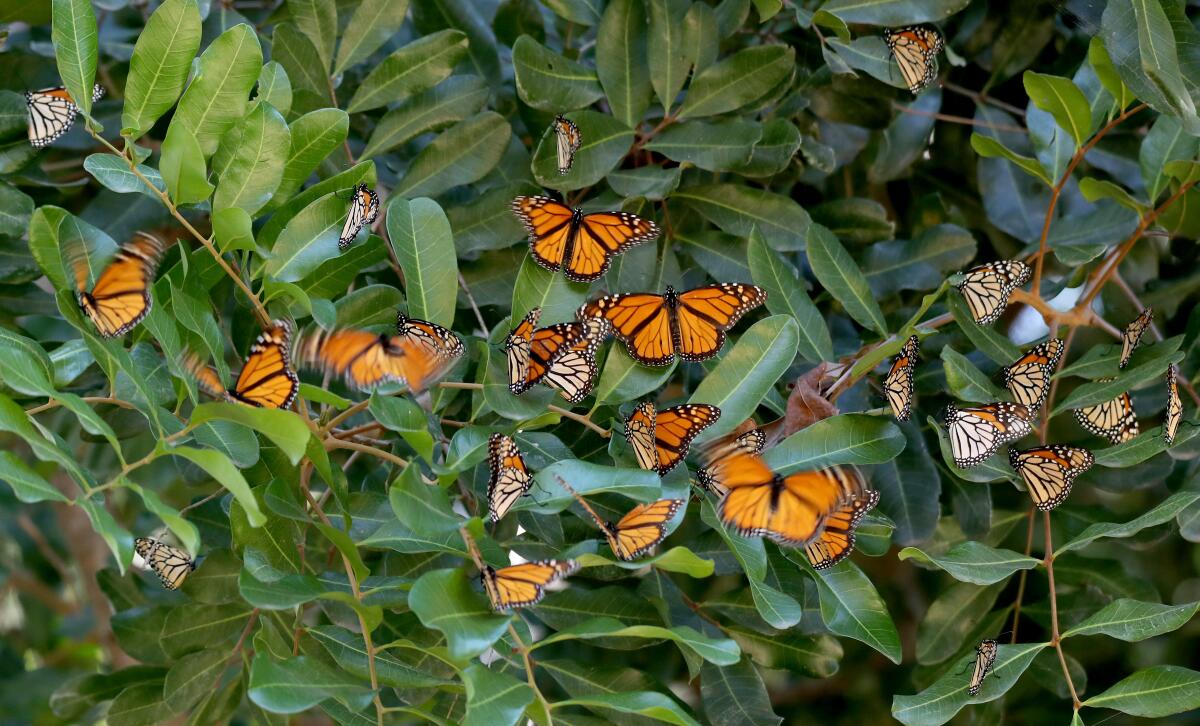
Huntington Beach — Visitors to a local park were delighted to see the abundance of the rare orange and black butterflies fluttering around and resting on tree branches. Some took photos and video with their cellphones as they smiled at the sight.
Western monarch butterflies breed west of the Rockies and overwinter at hundreds of sites along the California coast, according to experts. The L.A. Times reports the number of monarchs that migrate to the West Coast has dropped by 99.9% over the past several years, but conservation biologists are hoping to see more this year.
According to MonarchMilkweedmapper.org, the monarchs “seek out very specific microclimate conditions, including dappled sunlight, high humidity, access to fresh water and an absence of freezing temperatures or high winds. Fall- or winter-blooming flowers provide nectar, which may be needed to maintain lipid levels necessary for spring migration. The tree species most commonly used for roosting are the nonnative blue gum eucalyptus and the native Monterey pine and Monterey cypress. Clusters can also be found on nonnative red gum eucalyptus and the native western sycamore, coast redwood, coast live oak and others.”
California State Parks notes “at the Pismo State Beach Monarch Butterfly Grove, the tall eucalyptus and Monterey cypress trees provide the shelter and canopy for thermal stability. Although cool temperatures are needed to slow the use of stored energy reserves, monarchs cannot survive long periods of freezing temperatures. Unusually warm temperatures trigger a search for food and mates. Adjacent to the grove of trees is a natural garden with native flowering plants that provide nectar for the adult butterflies.”
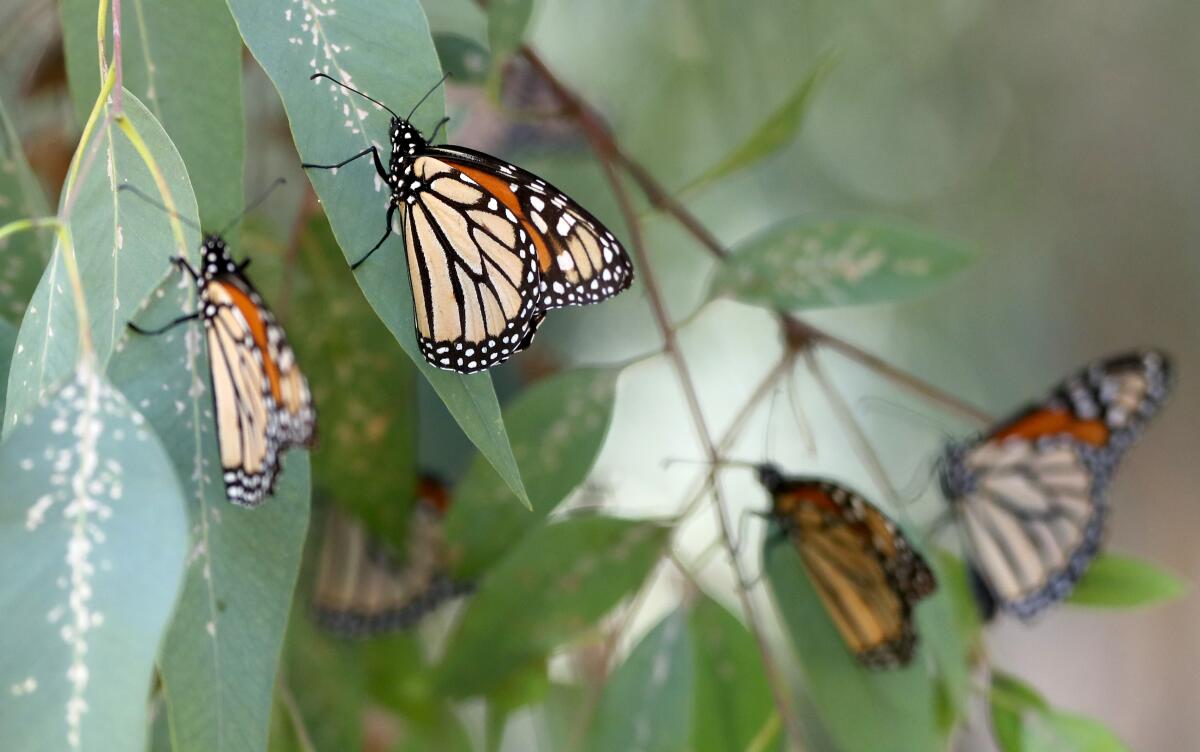
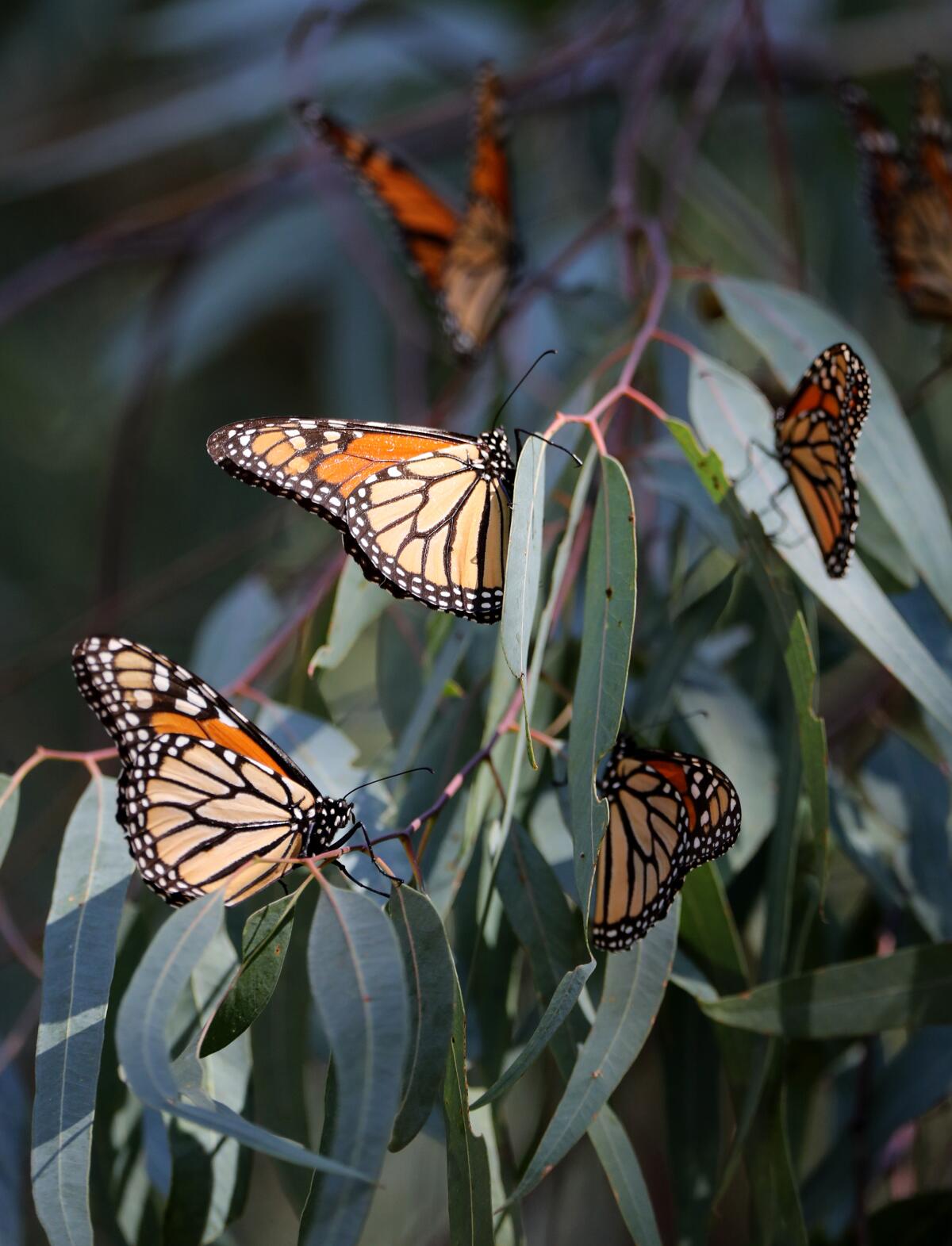
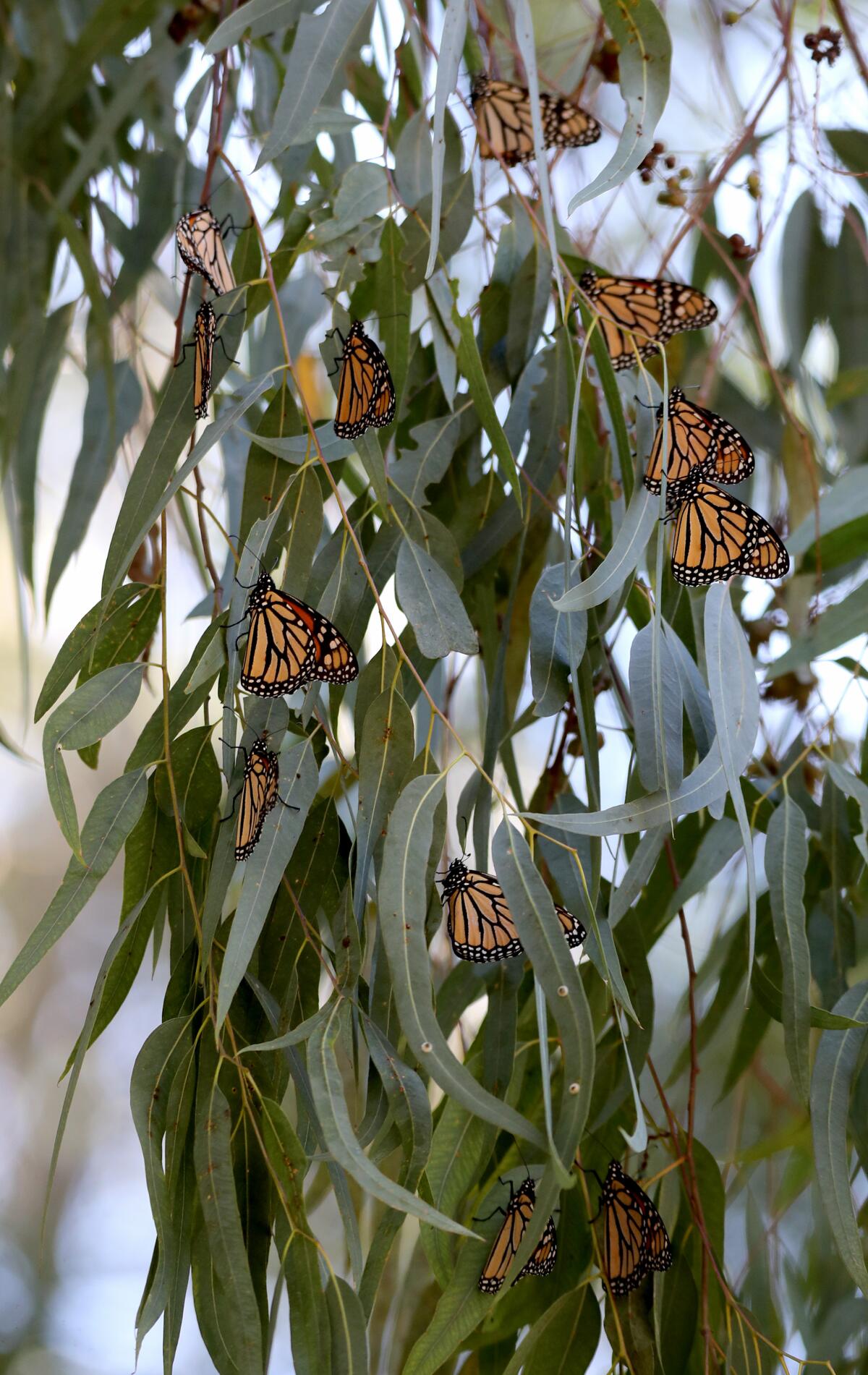
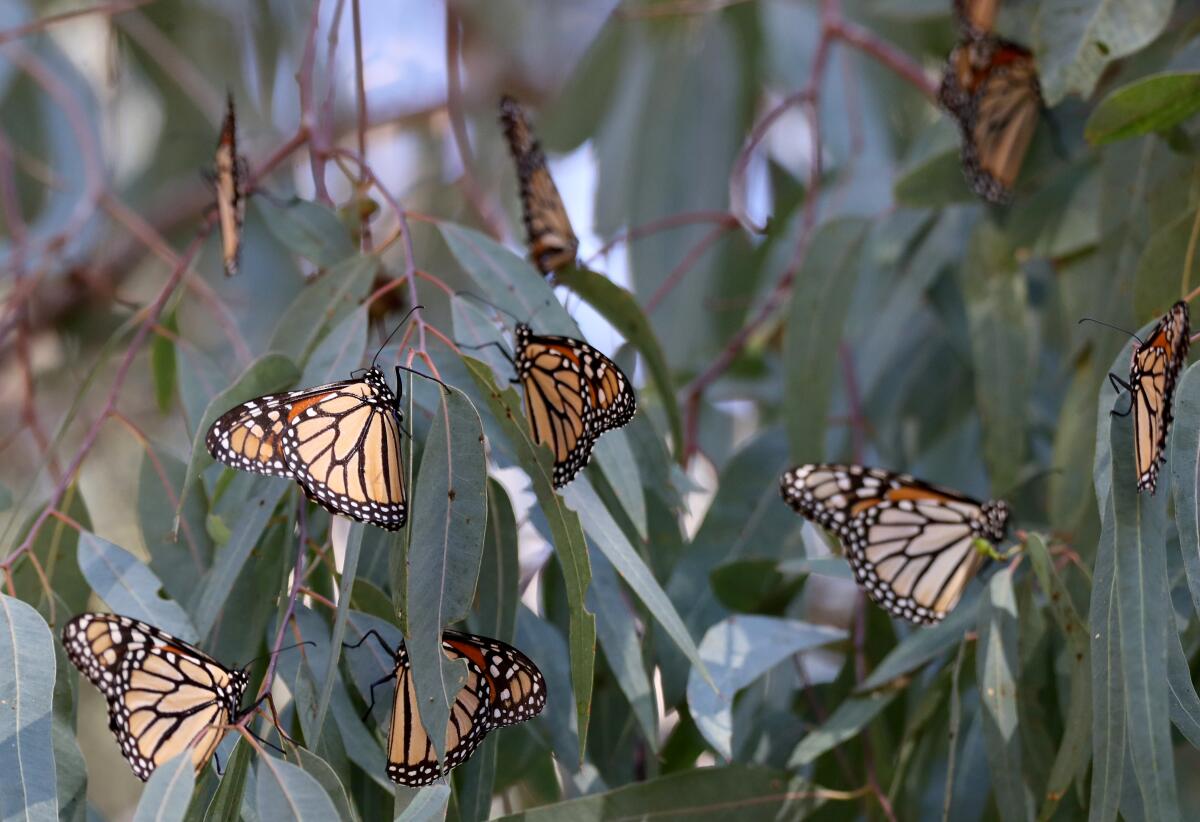

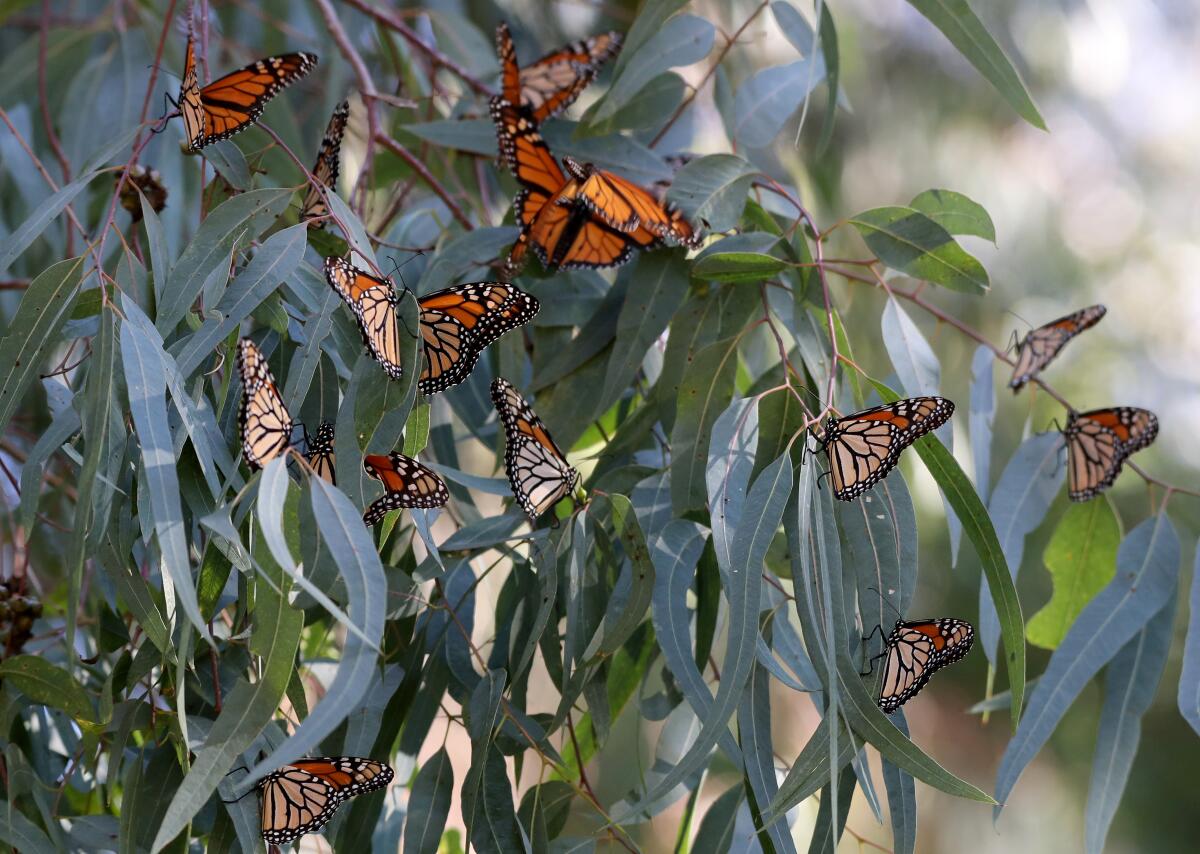
All the latest on Orange County from Orange County.
Get our free TimesOC newsletter.
You may occasionally receive promotional content from the Daily Pilot.



